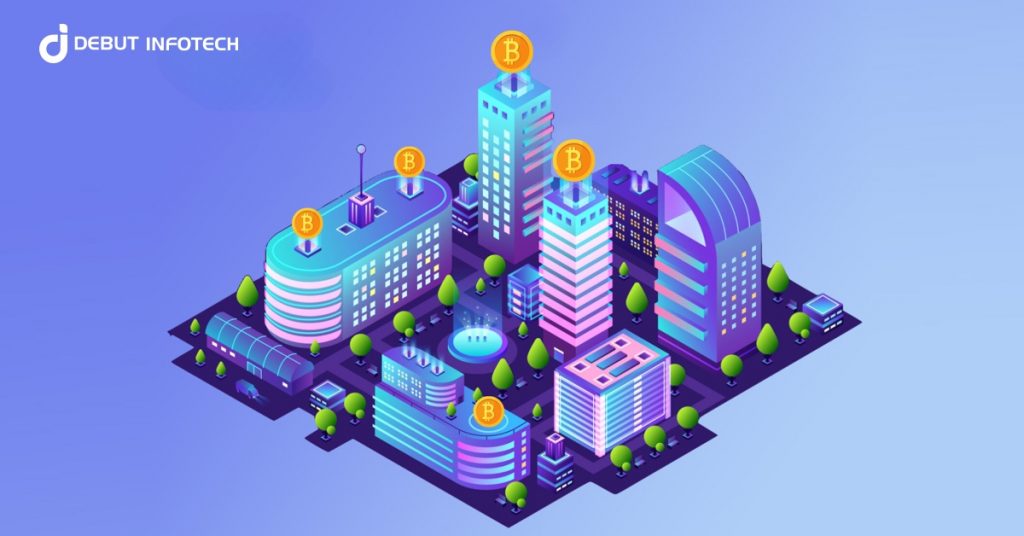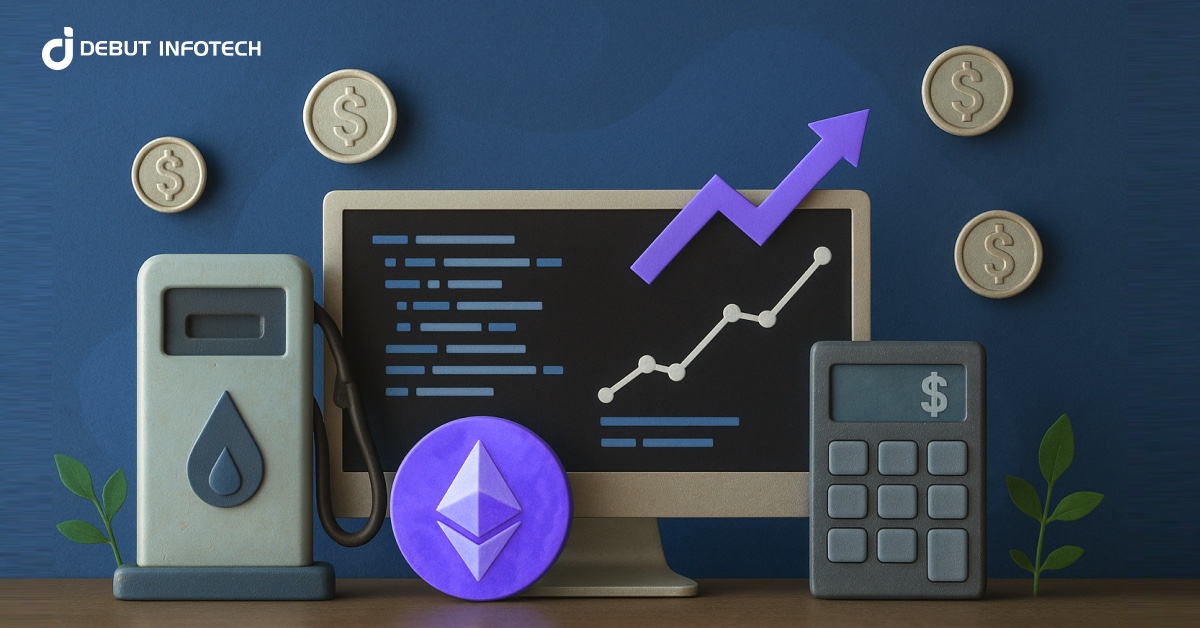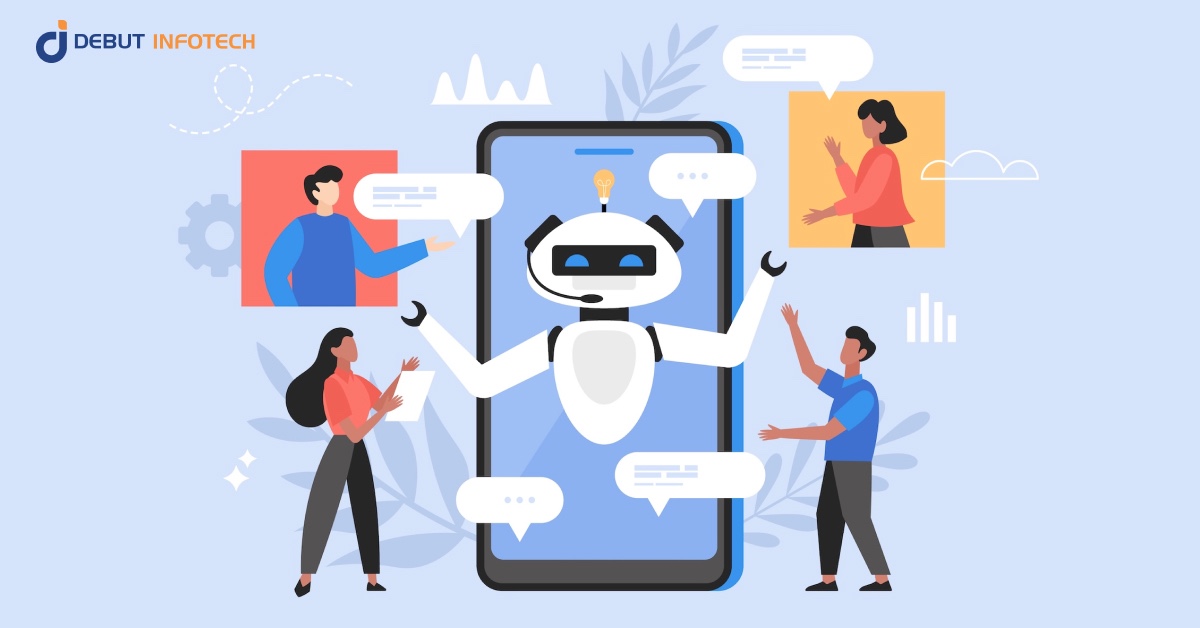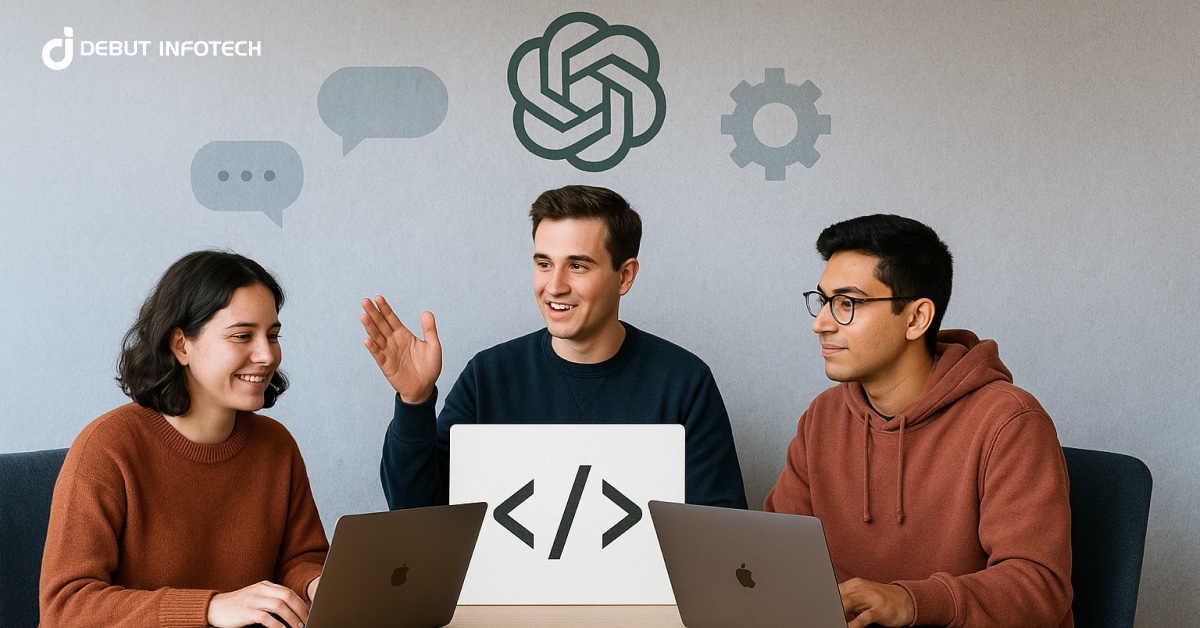
|
Getting your Trinity Audio player ready...
|
The expansion of the cryptocurrency market offers a big chance for tokenization, particularly for real world assets (RWAs). The decentralized framework created by RWAs tokenization has a potential market size of billions of dollars. Tokenized RWAs cover a wide range of assets, including currency, commodities, and real estate. There is a chance to save billions of dollars on clearing and settlement fees in this expanding market area.
According to research from Binance, experts predict that by 2030, the real world asset custody services and the market as a whole will probably reach a massive $16 trillion. Blockchain technology has a huge chance to take advantage of this and turn them into tokenized assets. This extensive book covers the theoretical, blockchain, and practical aspects of developing real world asset tokens on the blockchain to give readers a solid grasp of asset tokenization.
What Are Real World Assets Tokenization?
Tokenization is the act of transferring ownership of a physical object, such as land, gold, or property rights, into a digital token. The tokens function as a unit of exchange and symbolize tangible goods. On the blockchain network, anything with a real world monetary value can be tokenized and exchanged.
On the Blockchain asset tokenization is the act of converting a physical item into a digital token that can be exchanged. The token economy, also known as asset fractionalization, facilitates the exchange of even small quantities of the good, making it easier to obtain and divide. It functions in certain respects, but not in the same ones as funding and partial control.
Businesses are embracing the tokenization of industrial assets, real estate, and business equities. There are very few transactional downsides, and tokenization enhances security, encourages crowdsourcing, and yields higher profits. Additionally, real world assets that were not able to join the DeFi ecosystem are now possible thanks to tokenization.
Both tangible assets (real estate, artwork, books, etc.) and intangible assets (government bonds, credits, etc.) are considered real world assets. To make these assets accessible to investors throughout the world, they are converted into digital tokens and kept on a blockchain.
The tangible assets that RWAs represent are fundamental assets with universal recognition and substantive value, which means that their ownership and value are generally recognized and understood. As a result, these assets are suitable for use in international transactions, investments, and other financial operations. They are valuable items that belong to people or businesses and are anticipated to bring in money in the future. Through licensing or sales, ownership can be converted into value. A sizeable amount of the entire global financial value is composed of these tangible assets.
It is a ground-breaking innovation because these widely accepted physical assets are integrated via RWAs into the blockchain and DeFi. Tokenization makes it possible to represent physical assets on a blockchain as tokens, allowing for their safe and easy purchase, sale, or exchange on online marketplaces. The goal of this combination of digital technology and traditional assets is to improve accessibility, liquidity, and transparency for the benefit of both asset owners and buyers.
Why are Real World Asset Tokenization Useful?
Traditional investments like commodities and real estate frequently demand a sizable initial investment. Similarly, although bonds come in a variety of denominations, investing in them requires a substantial financial commitment, which mostly restricts participation to those who are already well-off. Geographical locations, legal frameworks, and regulations are important factors in asset accessibility. Different nations have different laws governing asset ownership and investment, which could discourage foreign investors or make it nearly impossible for them to do so without institutional support. Once more, most of the time, this calls for a certain level of wealth.
Tokens for crypto Real World Assets offer novel solutions to these problems involving traditional financial assets. Their capacity to reduce entry barriers is among their most revolutionary features. They enable consumers to buy tokens that represent a fraction of real world assets, such as bonds or real estate, by allowing fractional ownership of those assets. Using this method, the initial capital need is essentially reduced, making these markets more accessible to a wider variety of individuals who may have otherwise been priced out of them.
Furthermore, blockchain technology’s worldwide reach dissolves national and international borders. It offers a platform via which resources that were previously restricted by jurisdictional or regional laws
become widely available. People from all around the world can now take advantage of possibilities that they may have previously been priced out of or denied due to their worldwide reach. Moreover, the fundamental layout of cryptocurrency exchanges improves the liquidity of assets that are typically illiquid. Individuals now possess the flexibility to quickly take up or abandon positions, adjusting their plans in response to changing market circumstances.
Lastly, the potential of tokenization to split physical assets into more manageable chunks is what makes it fundamental. This method creates the foundation for a more equitable and diverse asset ownership environment while also democratizing access to investments. In essence, RWA tokens bridge the old with the modern, a more fair playing field in traditional financial markets.
Process of Tokenizing Real World Assets
Tokenizing real world assets involves a structured process with distinct stages:
- Identification and Assessment
Real world asset identification and assessment based on variables such as market demand, liquidity, etc. constitute the first step.
- Compliance with Laws and Regulations
Ensuring that all legal and regulatory requirements related to the RWA are met. Put differently, confirm that the digital token representing the asset can be lawfully represented.
- Structure of Assets
Create a clear ownership structure, revenue-sharing plans, and other terms and conditions before structuring the asset for tokenization.
- Tokenization Platform Selection
Select a blockchain protocol (such as Ethereum, Polymesh, etc.) that makes sense for your needs taking compatibility, security, and scalability into account.
- Development of Smart Contracts
Make the necessary smart contracts to reflect the specified ownership rights and other terms and conditions pertaining to the token’s issuance, transfer, and redemption.
- Generation of Tokens
Create the asset-backed tokens on the blockchain platform or protocol of your choice now. Ensure that every token corresponds to a portion of the underlying asset’s ownership.
- Legal Records and Token Offering
To provide prospective investors with accurate information about the token, complete all legal paperwork, including ownership records and documents related to the token offering.
- Solutions for Custody
In order to guarantee the security of the tangible assets that support the tokens, this phase entails obtaining custody solutions. It might also involve implementing physical security protocols for RWAs.
- Creating an Exchange Platform
Provide a marketplace or exchange where investors can easily and safely purchase, sell, or trade tokenized real world assets.
Practical Applications of Asset Tokenization
In the fast-paced world of today, control is undergoing a transformation. Digital asset tokenization is a cutting-edge technology that is revolutionizing the way we view and market assets, facilitating universal access and usage. Let’s examine how asset tokenization is a tool that can improve people’s lives rather than merely being a new technological advancement.
Real Estate
Assume a young couple wishes to purchase a home in a crowded metropolis. It seems unlikely they will reach their target given how quickly housing prices are rising. On the other side, asset tokenization enables them to purchase coins that represent a tiny portion of a property’s value in order to make an investment. They can invest in real estate without having to make large upfront payments and create equity with this fractional ownership arrangement.
Art and Collectibles
Art has always been associated with prestige and riches that most people cannot buy. However, asset tokenization is opening up the art sector to more people. Consider possessing a ticket valued at a specific sum equivalent to a well-known painting. This allows art enthusiasts to purchase priceless pieces of artwork and ensures that cultural history is shared with a larger audience.
Financial Instruments and Securities
Due to their complexity and high entry barriers, stocks and bonds are difficult for many people to invest in. Asset tokenization companies facilitates this process by enabling small-scale investments in actual assets. Stated differently, a valuable stock share can be divided into several tokens, allowing small purchasers to enter the market.
Other Industries and Use Cases
Asset tokenization has the potential to transform not just traditional assets but also numerous other industries. Tokenizing crops can help farmers in developing nations, for instance, sell their produce on international markets and receive fair prices. Similarly, musicians and vocalists might tokenize their work to ensure that they receive royalties from consumers understandably and straightforwardly.
Real world asset tokenization is more than simply a novel technology. It also serves as a means of empowering and integrating individuals. By granting more people access to resources, it has the potential to transform lives and provide new opportunities everywhere. As this technology advances, it will be interesting to observe how investing and owning goods will alter in the future.
Advantages of Real World Asset Tokenization
Tokenizing real world assets yields several advantages:
- Enhanced Liquidity: The process of tokenization increases the marketability of previously illiquid assets. Even small investors can trade actual assets thanks to it.
- Increased Transparency: The blockchain-based tokenization process ensures complete transparency and immutability of recorded transactions and data. It encourages the development of a more secure and efficient asset ownership and trading ecosystem.
- Enhanced Accessibility: Real world assets that have been tokenized expand the pool of potential consumers.
- Cost-effectiveness: Real world tokenization streamlines a number of real world asset management and trading-related procedures, including asset transfer, settlement, compliance, and others. It reduces dependency on human resources and saves a significant amount of money.
- Fractional Ownership: By dividing real world assets into smaller tokens and marketable fractions, RWA tokenization provides a notable benefit that enables investors to diversify their holdings and expand their portfolios.
- 24/7 Market Access: Users require a decentralized platform that provides them with round-the-clock access to global marketplaces in order to trade digital tokens. Put another way, investors are not limited by space or time and are free to purchase, sell, or swap real assets at any moment.
Challenges and Risks in Real world Asset Tokenization
Real world asset tokenization entails a number of risks and difficulties that need to be resolved for smooth trading, purchasing, and selling processes. Here are a few of them:
- Regulatory Uncertainty
Tokenized asset regulatory frameworks are still developing, which leads to ambiguity and compliance problems. Furthermore, altered laws in various jurisdictions may potentially provide a barrier to the issuance, exchange, and ownership of tokens.
- Lack of Standardization
The lack of established standards and protocols for tokenizing real world assets may hampered the interoperability, liquidity, and market acceptance of digital tokens. This can restrict the scalability and accessibility of tokenized assets and result in inefficiencies and fragmentation.
- Security Vulnerabilities
Blockchain-based systems are susceptible to security lapses, fraud, and cybercrimes. Due to the irreversible nature of blockchain transactions, asset ownership issues result from security incidents that have double the impact.
- Market Illiquidity
RWA may lead to more liquidity, but market illiquidity could hinder asset tokenization due to low investor demand, technological limitations, and legal concerns. It may also result in difficulties executing deals and price volatility.
- Improper Custody and Asset Management
Strong custody and asset management systems are required to safeguard tokenized assets from fraud, theft, and unapproved assets. Managing all of this while adhering to laws could pose technological and operational difficulties.
- Market Fluctuations
The market for tokenized assets could be subject to manipulation or swings using various bots or algorithms. Market manipulation may result from improper handling or oversight of these bots and algorithms.
- Technological Risks
Technical malfunctions and restricted access to technology can result in scalability problems, network congestion, and other interoperability problems that can disrupt the asset tokenization process and cost money.
- Valuation Complexity
Particularly for assets like real estate or relics, the inability to ascertain the tokenization assets’ fair market worth might pose serious issues. In addition, disparities in asset pricing may result from differences in valuation methodology.
Blockchain Protocols for Real World Asset Tokenization
Because different blockchain protocols have different capabilities, choosing the right one is essential for tokenizing real world assets like loans, commodities, and real estate. Here are a few things to think about:
- Ethereum
Ethereum is favored for RWA tokenization due to its strong smart contract capabilities. It makes the process of creating programmable digital assets, or tokens, easier. The most widely used blockchain for tokenizing assets with full compatibility and interoperability is ERC-20.
- Hyperledger Fabric
Hyperledger Fabric is an internationally recognized blockchain that is used for asset tokenization and is supported by a modular design. Furthermore, its abundance of privacy protections and access controls make it a suitable option for digital asset tokenization solutions that comply with regulations in industries like finance and logistics.
- Steller
The Steller blockchain is used by real world assets that have significant transaction volumes or liquidity requirements. It features an integrated decentralized exchange that enables smooth asset trading in addition to facilitating quick and inexpensive transactions.
- R3 Corda
Corda is a distributed ledger technology created by R3, primarily intended for enterprise use cases in industries where maintaining privacy and adhering to regulations is essential. Corda primarily concentrates on two aspects: data security and privacy. For tokenizing real estate, intellectual property, and other assets, it is the ideal option.
- Tezos
Tezos has strong verification capabilities and on-chain governance, which are essential for ensuring security and flexibility while tokenizing assets. Additionally, it features a self-correcting protocol that helps networks evolve for long-term stability and digital asset tokenization compatibility.
Factors to Take into Account Before Beginning the Token Economy
Before entering the token development industry, consider developing a strong business strategy that is consistent with tokenomics. Assess how well tokens have been incorporated into your blockchain system, making sure that the user interfaces are easy to use. Give cybersecurity precautions a priority to avert attacks. For legal acceptability and user confidence, navigating regulatory compliance—including securities laws, AML, and KYC standards—is essential.
- Creating a strong business plan is essential when entering the token development market.
- Make it clear how tokens will be utilized within your ecosystem.
- Recognize the financial benefits for token owners.
- To ensure unity with business goals, user engagement, and long-term sustainability, evaluate the viability of tokenomics.
- One crucial element is the ease of token integration into your blockchain platform.
- Evaluate the technical aspects, like choosing the right blockchain and token specifications.
- The process of integration must align with the needs of the blockchain platform and the overall user experience.
- When using the token economy, cybersecurity is an important factor to take into account.
- Adopt strong cybersecurity safeguards, including regular audits, encryption, and the creation of secure smart contracts.
- It is imperative to comprehend the regulatory landscape prior to delving into the token economy.
- Working with legal specialists to navigate the complex regulatory environment.
Real World Asset Trends for 2024
Real world assets seem to have a bright future, judging by the rise in demand and popularity they have experienced in recent years. Watch the following seven RWA trends in 2024:
- Stablecoin Surge: Due to their flexibility and stability, stablecoins are becoming more and more popular for use in cross-border trade and payments.
- Tokenized Treasury Securities: Combine traditional and decentralized finance to create fresh investment options and ways to diversify your portfolio.
- Private Credit Revolution: Debt capital becomes accessible to SMEs, democratizing borrowing and broadening their sources of funding.
- Non-fungible tokens (NFTs) with backing: A revolution in collection financing that makes lending and borrowing secured by physical goods possible.
- Customer Branded NFTs: Using gamification and immersive experiences, consumer brand NFTs can increase brand loyalty.
- Climate and Regenerative Finance: Blockchain encourages ESG transparency, enabling sustainable initiatives.
- Tokenized Deposits and Bank Settlements: Increase transaction and settlement efficiency to elevate banking.
Conclusion
The blockchain-based tokenization of real assets is a momentous breakthrough in ownership and economics. Although technology carries with it obstacles like security concerns and regulatory issues, it also increases accessibility, transparency, and efficiency. Important lessons include the significance of a well-thought-out company plan, simple blockchain platform integration, strong cybersecurity defenses, and unwavering regulatory compliance. As a leading real world asset tokenization platform, Debut Infotech leverages knowledge in blockchain, cybersecurity, and user experience to offer comprehensive solutions that are customized to meet the needs of organizations.


